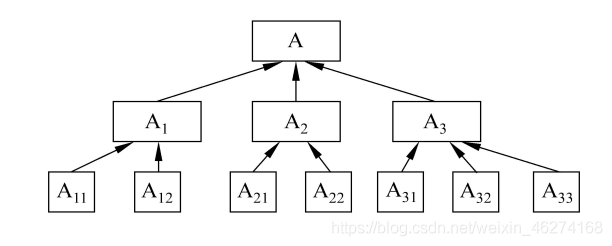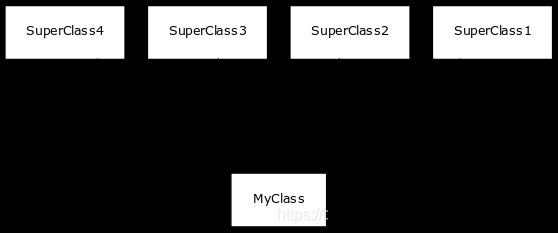жӮЁеҘҪпјҢзҷ»еҪ•еҗҺжүҚиғҪдёӢи®ўеҚ•е“ҰпјҒ
жӮЁеҘҪпјҢзҷ»еҪ•еҗҺжүҚиғҪдёӢи®ўеҚ•е“ҰпјҒ
жң¬зҜҮеҶ…е®№д»Ӣз»ҚдәҶвҖңC++дёӯзҡ„继жүҝзҡ„жҰӮеҝөе’ҢеҠҹиғҪд»Ӣз»ҚвҖқзҡ„жңүе…ізҹҘиҜҶпјҢеңЁе®һйҷ…жЎҲдҫӢзҡ„ж“ҚдҪңиҝҮзЁӢдёӯпјҢдёҚе°‘дәәйғҪдјҡйҒҮеҲ°иҝҷж ·зҡ„еӣ°еўғпјҢжҺҘдёӢжқҘе°ұи®©е°Ҹзј–еёҰйўҶеӨ§е®¶еӯҰд№ дёҖдёӢеҰӮдҪ•еӨ„зҗҶиҝҷдәӣжғ…еҶөеҗ§пјҒеёҢжңӣеӨ§е®¶д»”з»Ҷйҳ…иҜ»пјҢиғҪеӨҹеӯҰжңүжүҖжҲҗпјҒ
йқўеҗ‘еҜ№иұЎзЁӢеәҸи®ҫи®ЎдёӯжңҖйҮҚиҰҒзҡ„дёҖдёӘжҰӮеҝөжҳҜ继жүҝ (inheritance). 继жүҝе…Ғи®ёжҲ‘们дҫқжҚ®еҸҰдёҖдёӘзұ»жқҘе®ҡд№үдёҖдёӘзұ», иҝҷдҪҝеҫ—еҲӣе»әе’Ңз»ҙжҠӨдёҖдёӘеә”з”ЁзЁӢеәҸеҸҳеҫ—жӣҙз»ҹдёҖ. иҝҷж ·еҒҡд№ҹиҫҫеҲ°дәҶйҮҚз”Ёд»Јз ҒеҠҹиғҪе’ҢжҸҗй«ҳжү§иЎҢж•ҲзҺҮзҡ„ж•Ҳжһң.
дёҖдёӘзұ»дёӯеҢ…еҗ«дәҶиӢҘе№Іж•°жҚ®жҲҗе‘ҳе’ҢжҲҗе‘ҳеҮҪж•°. дёҚеҗҢзҡ„зұ»дёӯзҡ„ж•°жҚ®жҲҗе‘ҳе’ҢжҲҗе‘ҳеҮҪж•°еҗ„дёҚзӣёеҗҢ. дҪҶжҳҜжңүж—¶дёӨдёӘзұ»зҡ„еҶ…е®№еҹәжң¬зӣёеҗҢ. дҫӢеҰӮ:

继жүҝ (inheritance) е°ұжҳҜеңЁдёҖдёӘе·ІеӯҳеңЁзҡ„зұ»зҡ„еҹәзЎҖдёҠе»әз«ӢдёҖдёӘж–°зҡ„зұ».
е·ІеӯҳеңЁзҡ„зұ»: еҹәзұ» (base class) жҲ–зҲ¶зұ» (father class)
ж–°е»әз«Ӣзҡ„зұ»: жҙҫз”ҹзұ» (derived class) жҲ–еӯҗзұ» (son class)

дёҖдёӘж–°зұ»д»Һе·Іжңүзҡ„зұ»иҺ·еҫ—е…¶е·Іжңүзү№жҖ§, з§°дёәзұ»зҡ„继жүҝ.
йҖҡиҝҮ继жүҝ, дёҖдёӘж–°е»әзҡ„еӯҗзұ»д»Һе·Іжңүзҡ„зҲ¶зұ»йӮЈйҮҢиҺ·еҫ—зҲ¶зұ»зҡ„зү№жҖ§
жҙҫз”ҹзұ»з»§жүҝдәҶеҹәзұ»зҡ„жүҖжңүж•°жҚ®жҲҗе‘ҳе’ҢжҲҗе‘ҳеҮҪж•°, 并еҸҜд»ҘеҜ№жҲҗе‘ҳеҒҡеҝ…иҰҒзҡ„еўһеҠ жҲ–и°ғж•ҙ
д»Һе·Іжңүзҡ„зұ» (зҲ¶зұ») дә§з”ҹдёҖдёӘж–°зҡ„еӯҗзұ», з§°дёәзұ»зҡ„жҙҫз”ҹ.
зұ»зҡ„继жүҝжҳҜз”Ёе·Іжңүзҡ„зұ»жқҘе»әз«Ӣдё“з”Ёж–°зұ»зҡ„зј–зЁӢжҠҖжңҜ
дёҖдёӘеҹәзұ»еҸҜд»Ҙжҙҫз”ҹеҮәеӨҡдёӘжҙҫз”ҹзұ», жҜҸдёҖдёӘжҙҫз”ҹзұ»еҸҲеҸҜд»ҘдҪңдёәеҹәзұ»еҶҚжҙҫз”ҹеҮәж–°зҡ„жҙҫз”ҹзұ». еӣ жӯӨеҹәзұ»е’Ңжҙҫз”ҹзұ»жҳҜзӣёеҜ№иҖҢиЁҖзҡ„
жҙҫз”ҹзұ»жҳҜеҹәзұ»зҡ„е…·дҪ“еҢ–, иҖҢеҹәзұ»еҲҷжҳҜжҙҫз”ҹзұ»зҡ„жҠҪиұЎ
еҚ•з»§жүҝ (single inheritance) жҢҮдёҖдёӘжҙҫз”ҹзұ»еҸӘд»ҺдёҖдёӘеҹәзұ»жҙҫз”ҹ.
еҚ•з»§жүҝе…ізі»еҪўжҲҗзҡ„еұӮж¬ЎжҳҜдёҖдёӘж ‘еҪўз»“жһ„
з®ӯеӨҙиЎЁзӨә继жүҝзҡ„ж–№еҗ‘, д»Һжҙҫз”ҹзұ»жҢҮеҗ‘еҹәзұ»

еӨҡйҮҚ继жүҝ (multiple inheritance) жҳҜжҢҮдёҖдёӘжҙҫз”ҹзұ»жңүдёӨдёӘжҲ–еӨҡдёӘеҹәзұ». жҙҫз”ҹзұ»дёҚд»…еҸҜд»Ҙд»ҺдёҖдёӘеҹәзұ»жҙҫз”ҹ, д№ҹеҸҜд»Ҙд»ҺеӨҡдёӘеҹәзұ»жҙҫз”ҹ.

жҙҫз”ҹзұ»зҡ„еЈ°жҳҺж–№ејҸ:
class жҙҫз”ҹзұ»еҗҚ:[继жүҝж–№ејҸ]еҹәзұ»еҗҚ{
жҙҫз”ҹзұ»ж–°еўһеҠ зҡ„жҲҗе‘ҳ
};жҲҗе‘ҳи®ҝй—®йҷҗе®ҡз¬Ұ (й»ҳи®Ө private):
public (е…¬з”Ёзҡ„)
private (з§Ғжңүзҡ„)
protected (еҸ—дҝқжҠӨзҡ„)
继жүҝж–№ејҸеҢ…жӢ¬ (й»ҳи®Ө private):
public (е…¬з”Ёзҡ„)
private (з§Ғжңүзҡ„)
protected (еҸ—дҝқжҠӨзҡ„)
Student зұ»:
#ifndef PROJECT5_STUDENT_H
#define PROJECT5_STUDENT_H
#include <string>
using namespace std;
class Student {
protected:
int number;
string name;
char sex;
public:
Student(int num, string n, char s);
void show();
};
#endif //PROJECT5_STUDENT_HStudent.cpp:
#include <iostream>
#include "Student.h"
using namespace std;
Student::Student(int num, string n, char s) {
number = num;
name = n;
sex = s;
}
void Student::show() {
cout << "number: " << number << endl;
cout << "name: " << name << endl;
cout << "sex: " << sex << endl;
}Student жҙҫз”ҹзұ»:
#ifndef PROJECT5_STUDENT1_H
#define PROJECT5_STUDENT1_H
#include "Student.h"
class Student1:public Student {
private:
int age;
string address;
public:
Student1(int num, string n, char s, int a, string addr);
void show1();
};
#endif //PROJECT5_STUDENT1_HStudent1.cpp:
#include <iostream>
#include "Student1.h"
using namespace std;
Student1::Student1(int num, string n, char s, int a, string addr) : Student(num, n, s) {
Student(num, n, s);
age = a;
address = addr;
}
void Student1::show1() {
show();
cout << "age: " << age << endl;
cout << "address: " << address << endl;
}mian:
#include <iostream>
#include "Student1.h"
int main() {
Student1 student1(1, "Little White", 'f', 18, "зҒ«жҳҹ");
student1.show1();
return 0;
}иҫ“еҮәз»“жһң:
number: 1 name: Little White sex: f age: 18 address: зҒ«жҳҹ
жҙҫз”ҹзұ»дёӯзҡ„жҲҗе‘ҳеҢ…жӢ¬д»Һеҹәзұ»з»§жүҝиҝҮжқҘзҡ„жҲҗе‘ҳе’ҢиҮӘе·ұеўһеҠ зҡ„жҲҗе‘ҳдёӨеӨ§йғЁеҲҶ. жҜҸдёҖйғЁеҲҶеёғеҲҶеҲ«еҢ…жӢ¬ж•°жҚ®жҲҗе‘ҳе’ҢжҲҗе‘ҳеҮҪж•°.
жһ„йҖ еҮҪж•°е’Ңжһҗжһ„еҮҪж•°:
жһ„йҖ еҮҪж•°зҡ„дё»иҰҒдҪңз”ЁжҳҜеҜ№ж•°жҚ®жҲҗе‘ҳеҲқе§ӢеҢ–жһҗжһ„еҮҪж•°еңЁйҮҠж”ҫеҜ№иұЎеүҚеҒҡдёҖдәӣзӣёе…ізҡ„еӨ„зҗҶ
еӣ дёәжҙҫз”ҹзұ»иҝҳ继жүҝдәҶеҹәзұ»зҡ„ж•°жҚ®жҲҗе‘ҳ. и®ҫи®Ўжҙҫз”ҹзұ»зҡ„жһ„йҖ еҮҪж•°ж—¶, дёҚд»…иҰҒиҖғиҷ‘жҙҫз”ҹзұ»жүҖеўһеҠ зҡ„ж•°жҚ®жҲҗе‘ҳзҡ„еҲқе§ӢеҢ–, иҝҳеә”еҪ“иҖғиҷ‘еҹәзұ»зҡ„ж•°жҚ®жҲҗе‘ҳеҲқе§ӢеҢ–. дәҺжҳҜжҲ‘们еңЁжү§иЎҢжҙҫз”ҹзұ»зҡ„жһ„йҖ еҮҪж•°ж—¶, и°ғз”Ёеҹәзұ»зҡ„жһ„йҖ еҮҪж•°.
жҙҫз”ҹзұ»жһ„йҖ еҮҪж•°еҗҚ (жҖ»еҪўејҸеҸӮж•°иЎЁеҲ—) : еҹәзұ»жһ„йҖ еҮҪж•°еҗҚ (е®һйҷ…еҸӮж•°иЎЁеҲ—) {
жҙҫз”ҹзұ»дёӯж–°еўһж•°жҚ®жҲҗе‘ҳеҲқе§ӢеҢ–иҜӯеҸҘ
}еңЁзұ»еҶ…е®ҡд№үжҙҫз”ҹзұ»жһ„йҖ еҮҪж•°:
Student1::Student1(int num, string n, char s, int a, string addr) : Student(num, n, s), age(a), address(addr) {}еңЁзұ»зҡ„еӨ–йқўе®ҡд№үжҙҫз”ҹзұ»жһ„йҖ еҮҪж•°:
зұ»еҶ…:
Student1(int num, string n, char s, int a, string addr);
зұ»еӨ–:
Student1::Student1(int num, string n, char s, int a, string addr) : Student(num, n, s) {
Student(num, n, s); // еҹәзұ»
age = a;
address = addr;
}е»әз«Ӣжҙҫз”ҹзұ»еҜ№иұЎж—¶, жү§иЎҢжһ„йҖ еҮҪж•°зҡ„йЎәеәҸ:
жҙҫз”ҹзұ»жһ„йҖ еҮҪж•°е…Ҳи°ғз”Ёеҹәзұ»жһ„йҖ еҮҪж•°
еҶҚжү§иЎҢжҙҫз”ҹзұ»жһ„йҖ еҮҪж•°жң¬иә« (еҚіжҙҫз”ҹзұ»жһ„йҖ еҮҪж•°зҡ„еҮҪж•°дҪ“)
еңЁжҙҫз”ҹзұ»еҜ№иұЎйҮҠж”ҫж—¶:
е…Ҳжү§иЎҢжҙҫз”ҹзұ»жһҗжһ„еҮҪж•° ~Derived()
еҶҚжү§иЎҢе…¶еҹәзұ»жһҗжһ„еҮҪж•° ~Base()
Base зұ»:
#ifndef PROJECT5_BASE_H
#define PROJECT5_BASE_H
class Base {
protected:
Base();
~Base();
};
#endif //PROJECT5_BASE_HBase.cpp:
#include <iostream>
#include "Base.h"
using namespace std;
Base::Base() {
cout << "еҹәзұ»жһ„йҖ " << endl;
}
Base::~Base() {
cout << "еҹәзұ»жһҗжһ„" << endl;
}Derived зұ»:
#ifndef PROJECT5_DERIVED_H
#define PROJECT5_DERIVED_H
#include "Base.h"
using namespace std;
class Derived: public Base{
public:
Derived(char c);
~Derived();
};
#endif //PROJECT5_DERIVED_HDerived.cpp:
#include <iostream>
#include "Derived.h"
using namespace std;
Derived::Derived(char c) {
cout << "еӯҗзұ»жһ„йҖ еҮҪж•°, еҖј:" << c << endl;
}
Derived::~Derived() {
cout << "еӯҗзұ»жһҗжһ„еҮҪж•°" << endl;
}main:
#include <iostream>
#include "Derived.h"
using namespace std;
Derived::Derived(char c) {
cout << "еӯҗзұ»жһ„йҖ еҮҪж•°, еҖј:" << c << endl;
}
Derived::~Derived() {
cout << "еӯҗзұ»жһҗжһ„еҮҪж•°" << endl;
}иҫ“еҮәз»“жһң:
еҹәзұ»жһ„йҖ еӯҗзұ»жһ„йҖ еҮҪж•°, еҖј:b еӯҗзұ»жһҗжһ„еҮҪж•° еҹәзұ»жһҗжһ„
еӯҗеҜ№иұЎ (sub object), еҚіеҜ№иұЎдёӯзҡ„еҜ№иұЎ. зұ»зҡ„ж•°жҚ®жҲҗе‘ҳжҳҜеҸҰдёҖдёӘзұ»зҡ„еҜ№иұЎ.
Student1 зұ»:
#ifndef PROJECT5_STUDENT1_H
#define PROJECT5_STUDENT1_H
#include "Student.h"
class Student1:public Student {
private:
int age;
string address;
Student president;
public:
Student1(int num, string n, char s, int p_num, string p_n, char p_s, int a, string addr);
void show1();
};
#endif //PROJECT5_STUDENT1_HStudent1.cpp:
#include <iostream>
#include "Student1.h"
using namespace std;
Student1::Student1(int num, string n, char s, int p_num, string p_n, char p_s, int a, string addr) : Student(num, n, s), president(p_num, p_n, p_s) {
age = a;
address = addr;
}
void Student1::show1() {
show();
cout << "age: " << age << endl;
cout << "address: " << address << endl;
cout << "==========зҸӯй•ҝдҝЎжҒҜ==========" << endl;
president.show();
}main:
#include <iostream>
#include "Student1.h"
using namespace std;
int main() {
Student1 student1(1, "Little White", 'f', 2, "зҸӯй•ҝ", 'm', 18, "зҒ«жҳҹ");
student1.show1();
return 0;
}иҫ“еҮәз»“жһң:
number: 1 name: Little White sex: f age: 18 address: зҒ«жҳҹ ==========зҸӯй•ҝдҝЎжҒҜ========== number: 2 name: зҸӯй•ҝ sex: m
еҪ“дёҚйңҖиҰҒеҜ№жҙҫз”ҹзұ»ж–°еўһзҡ„жҲҗе‘ҳеҮҪж•°иҝӣиЎҢд»»дҪ•еҲқе§ӢеҢ–ж“ҚдҪңж—¶, жҙҫз”ҹзұ»жһ„йҖ еҮҪж•°дҪ“еҸҜд»Ҙдёәз©ә
еҹәзұ»жІЎжңүжһ„йҖ еҮҪж•°жҲ–жһ„йҖ еҮҪж•°еҸӮж•°дёәз©ә, еңЁжҙҫз”ҹзұ»жһ„йҖ еҮҪж•°дёӯеҸҜдёҚеҶҷи°ғз”Ёеҹәзұ»жһ„йҖ еҮҪж•°зҡ„иҜӯеҸҘ, зӣ—з”Ёжҙҫз”ҹзұ»жһ„йҖ еҮҪж•°ж—¶зі»з»ҹдјҡиҮӘеҠЁи°ғз”Ёеҹәзұ»зҡ„й»ҳи®Өжһ„йҖ еҮҪж•°
еҹәзұ»дёӯе®ҡд№үдәҶжңүеҸӮзҡ„жһ„йҖ еҮҪж•°, жҙҫз”ҹзұ»жһ„йҖ еҮҪж•°жҖ»еҝ…йЎ»еҶҷеҮәеҹәзұ»зҡ„жһ„йҖ еҮҪж•°еҸҠе…¶еҸӮж•°
еҹәзұ»дёӯж—ўе®ҡд№үж— еҸӮж•°зҡ„жһ„йҖ еҮҪж•°,еҸҲйҮҚиҪҪдәҶжңүеҸӮж•°зҡ„жһ„йҖ еҮҪж•°, жҙҫз”ҹзұ»жһ„йҖ еҮҪж•°дёӯеҸҜд»Ҙи°ғз”ЁеёҰеҸӮзҡ„еҹәзұ»жһ„йҖ еҮҪж•°, д№ҹеҸҜд»ҘдёҚи°ғз”Ёеҹәзұ»зҡ„жһ„йҖ еҮҪж•°
вҖңC++дёӯзҡ„继жүҝзҡ„жҰӮеҝөе’ҢеҠҹиғҪд»Ӣз»ҚвҖқзҡ„еҶ…е®№е°ұд»Ӣз»ҚеҲ°иҝҷйҮҢдәҶпјҢж„ҹи°ўеӨ§е®¶зҡ„йҳ…иҜ»гҖӮеҰӮжһңжғідәҶи§ЈжӣҙеӨҡиЎҢдёҡзӣёе…ізҡ„зҹҘиҜҶеҸҜд»Ҙе…іжіЁдәҝйҖҹдә‘зҪ‘з«ҷпјҢе°Ҹзј–е°ҶдёәеӨ§е®¶иҫ“еҮәжӣҙеӨҡй«ҳиҙЁйҮҸзҡ„е®һз”Ёж–Үз« пјҒ
е…ҚиҙЈеЈ°жҳҺпјҡжң¬з«ҷеҸ‘еёғзҡ„еҶ…е®№пјҲеӣҫзүҮгҖҒи§Ҷйў‘е’Ңж–Үеӯ—пјүд»ҘеҺҹеҲӣгҖҒиҪ¬иҪҪе’ҢеҲҶдә«дёәдё»пјҢж–Үз« и§ӮзӮ№дёҚд»ЈиЎЁжң¬зҪ‘з«ҷз«ӢеңәпјҢеҰӮжһңж¶үеҸҠдҫөжқғиҜ·иҒ”зі»з«ҷй•ҝйӮ®з®ұпјҡis@yisu.comиҝӣиЎҢдёҫжҠҘпјҢ并жҸҗдҫӣзӣёе…іиҜҒжҚ®пјҢдёҖз»ҸжҹҘе®һпјҢе°Ҷз«ӢеҲ»еҲ йҷӨж¶үе«ҢдҫөжқғеҶ…е®№гҖӮ